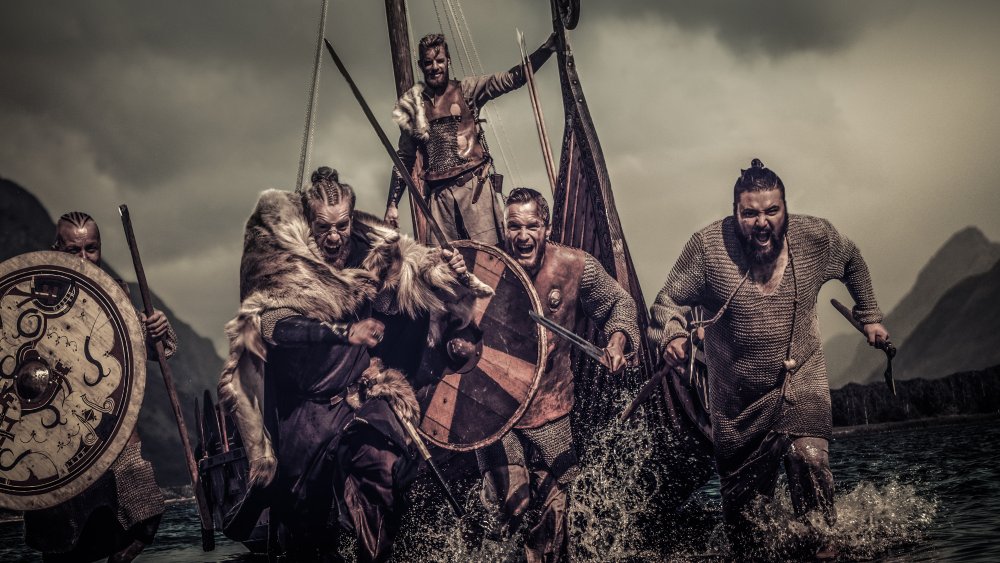The Disturbing Truth About The Vikings' Blood Eagle Execution
Popular opinion ebbs and flows, especially regarding history. There was a time when George Custer was a genuine American hero; now, not so much. Lots of people become victims of other people's press, and more than a few have tripped over their own feet and created image problems forever after. Was Wyatt Earp a brave, courageous, bold lawman, or a pimp? Depends on who you ask. (The correct answer is: All of the above.)
So it probably comes as no surprise that the group known as the Vikings gets a new veneer every few years or so. They were intrepid, fearless oceangoing explorers who beat Columbus to North America by, well, a lot, and according to the National Museum of Denmark, they had no actual horns on the actual helmets, which ruins a lot of optics but you have to admit it makes absolute sense. Then we come to various rituals and rites that don't involve reciting sagas and drinking a lot. In this case, we're talking about a nifty little procedure called the blood eagle execution. Perception may or may not be reality, and if you tend to see the Vikings as cruel, sadistic, muscle-bound axe-lovers, here's evidence to back it up.
Flight into the afterlife
Before we get into the details, remember that this one specialized in keeping the subject alive throughout the proceedings. Here's your blood eagle how-to, as related by Smithsonian Magazine:
First, fasten the victim, face-down, and carve the image of an eagle, wings outstretched, on the victim's back. Next, take an axe — there's nothing about sharpening it first — and use the axe to hew the victim's ribs from the spine. Some precision is called for here, since they're supposed to be removed one at a time. The bones and skin are then peeled back, to sort of kind of make them look like wings. You know — like an eagle. But wait: there's more. All of that exposed tissue then gets salt rubbed into it, which certainly puts "lemon juice on a paper cut" into perspective, doesn't it? And then, as a grand finale, the recipient's lungs are sort of, kind of removed but left sort of attached, so that the audience can watch them kind of "flutter" as the victim tried to take a few last breaths.
Most historians believe the ritual was real, and was performed more than once, usually on someone at least somewhat royal — specifically Ælla, King of Northumbria, in 867, as well as King Maelgualai of Munster, Ireland, and Haldán, son of Harald Finehair, King of Norway. Ælla and Edmund were both victims of Ivar the Boneless. So, the Vikings were ocean-going, artistic, sadistic, and consistent.

